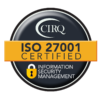Feasibility is a key issue for market research panels. What is feasibility, what are we talking about?
Feasibility is, how many of a certain patient type can we actually get to complete your survey. Not how many do we have, not how many respond, but how many can complete. This is what you need to know – can we complete the project as designed, do you need additional partners to complete it, do you need to lower your client’s expectations?
Three things make up feasibility: total available, response rate, and incidence rate.
1. How many do we have to be invited? This is the total number of those appropriate patients or caregivers we have in the panel. This is not a secret, we post our panel sizes, and share them explicitly in our proposals. But that is not the number that will complete the study! Some clients misinterpret this as the number we can get for a study! No, it is not that! This is just the starting point! You can’t get everyone to participate!
2. How many will respond to the invitation to the study? That is what we call response rate. This we have to estimate. For our non-cancer panels, it is about 50%, that is half of the people we send an email to about a project will express interest in participating. For our cancer panels, it is closer to 20%. We can estimate this fairly accurately based on our history with the panels. But this is not the final answer! Not everyone who is interested in taking part will qualify!
3. Which leads to the final component, what we call the incidence rate or IR. What is that? The incidence rate is what percent of those who are interested that will qualify. We do not determine that! It is dependent on the screener. We depend on the client to give us their best estimate of the incidence rate. We are happy to give our best guess once we see the screener, but we won’t really know until we launch the study. If you think the screener is not very restrictive, we may estimate the incidence rate at 70%. We don’t like to go higher than that. But if there are restrictive criteria – the patient has to use a certain drug, or have been diagnosed within a year, or be in an attitudinal segment – the incidence rate goes a lot lower.
We had a client recently who misunderstood incidence rate – they say we had promised an IR of 50%. No! We can’t promise an incidence rate! It is based on the screening criteria. We can only report what the incidence rate turns out to be! In their case it was only 6%.
What we can do, pretty quickly after a study launches, is report on the incidence rate. With a quant study, our client sees this, they have to let us know. But with qual, we see this. Then we need to see why it is low – is there a certain question that people are terminating on? Can the client loosen the specifications on that question? For example, if the screener wants patients diagnosed in the past year, and that is kicking most people out, maybe they could loosen that to allow patients diagnosed in the past two years.
Sometimes when the IR rate is lower than expected, the initial idea is that we need to just find more people. But think about it. If the IR is 6%, and you need another 100 completes, we would need to get 1,667 more to respond to get the 100 completes, and we’d need 3,334 available to get to those 1,667 at a 50% response rate. So, you’d need to get a LOT more people. Usually that is not the answer, or it is only part of the answer, when the IR is low.
We list all three of these components in our bids: total available, response rate, and incidence rate. We determine the first two, but the third, IR, is determined by the screener. We can only report what it is, and how you might change it. Please ask if you ever have any questions! We don’t want you disappointed because the feasibility has been misunderstood!







